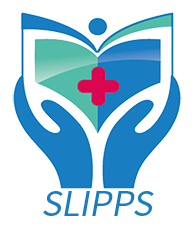24 Apr
2017
Medication without harm
WHO’s Third Global Patient Safety Challenge on “Medication without harm” took place in Germany last 29 March 2017. There, around of 300 professionals from 40 countries discussed patient safety concepts in 6 different workshops: “Economy and Efficiency of Patient Safety”, “Global Patient Safety –perspectives from low-and middle-income Countries”, “Patient Safety and mHealth, Big Data, and Handheld Devices”, “Prevention and Control of Infectious Diseases”, “Increased Safety of Diagnostics and Treatment-Checklists and Other Tools”, and “Safety of Medication Therapy” (Federal Ministry of Health, 2017).
At this last workshop, WHO presented their global launch that has as an aim to “archive widespread engagement and commitment from WHO Member States and professional bodies around the world to reduce the harm associated with medication” (WHO, 2017).
The United States National Coordinating Council for Medication Error Reporting and Prevention describes a medication error as:
“[…] any preventable event that may cause or lead to inappropriate medication use or patient harm while the medication is in the control of the health care professional, patient, or consumer. Such events may be related to professional practice, health care products, procedures, and systems, including prescribing, order communication, product labelling, packaging, and nomenclature, compounding, dispensing, distribution, administration, education, monitoring, and use” (cit. by WHO, 2016, p. 3).
In the clinical context, medication errors can arise during prescription, dispense or administration. Although health professionals (physician, nurse, pharmacist, etc.) follow the guidelines and protocols in a safe manner, medication error or near misses are possible. For nurses, medication administration is a jeopardy action and a daily procedure that consumes up to 40% of their shift (Cooper, 2014)
WHO has estimated the global cost of medication errors in 42 billion USD annually (WHO, 2017). More imperative is that unsafe medication practices and medication errors are important causes associated with patient harm across the world. In fact, in most countries, medication errors have the highest notification rate. For example, the Spanish Patient Safety Notification and Learning system (SiNASP) has indicated that the 29.5% (n=1476) of the incidents in 2014-15, were medication errors (Ministry of Health, Social Services and Equality, 2016). In England and Wales medication errors have been 11% (n=205255) of reported incident to the NRLS between April 2015 and March 2016 (NHS, 2016).
A selection of strategies and potential solutions for reducing medication errors in primary care was published by WHO (2016). Strategies are suggested using clinical pharmacists, computer technology, educational programmes, infectious diseases and appropriate antibiotic use. Also, medication reviews and reconciliation, automated information systems, education, and multicomponent interventions are presented as potential solutions. All of these proposals are suitable and adequate to assist the aim of reducing “severe avoidable medication-related harm by 50%, globally in the next 5 years” (WHO, 2017).
Finally, we make a reflection about medication errors and nursing students. Without any doubt, nursing students are in a disadvantageous position regarding this issue, mainly given their inexperience. Certainly, it is the moment to start planning educative programmes (online courses), training programmes, computer software, mobile applications, etc., to increase medication safety competence between students. Hence, the SLIPPS project will analyse and help to prevent medication errors and near misses between European nursing students.
Cooper, E. (2014). Nursing student medication errors: a snapshot view from a school of nursing’s quality and safety officer. J. Nurs. Educ. 53, S51–4. doi:10.3928/01484834-20140211-03
Federal Ministry of Health (2017). Patient Safety Summit 2017. Second Global Ministerial Summit on Patient Safety. Bonn (Germany), 29-30 March 2017. https://www.bundesgesundheitsministerium.de/en/health/patient-safety-summit-2017.html (Accessed 19 April 2017)
Ministry of Health, Social Services and Equality (2016). Sistema de Notificación y Aprendizaje para la Seguridad del Paciente (SiNASP). Informe de incidentes de seguridad notificados en 2014-2015. [Patient Safety Notification and Learning System (SiNASP). Report of notified security incidents in 2014-2015.] https://www.seguridaddelpaciente.es/resources/documentos/2016/160523_FINAL-Informe_SiNASP.pdf (Accessed 19 April 2017)
NHS (2016). National quarterly data on patient safety incident reports: September 2016. Analysis of the patient safety incidents reported in England and Wales to the National Reporting and Learning System (NRLS) up to June 2016. https://improvement.nhs.uk/resources/national-quarterly-data-patient-safety-incident-reports-september-2016/ (Accessed 20 April 2017)
WHO (2016). Medication Errors: Technical Series on Safer Primary Care. http://apps.who.int/iris/bitstream/10665/252274/1/9789241511643-eng.pdf?ua=1&ua=1 (Accessed 19 April 2017)
WHO (2017). Medication without harm: WHO’s Third Global Patient Safety Challenge. http://www.who.int/patientsafety/medication-safety/en/ (Accessed 19 April 2017)
